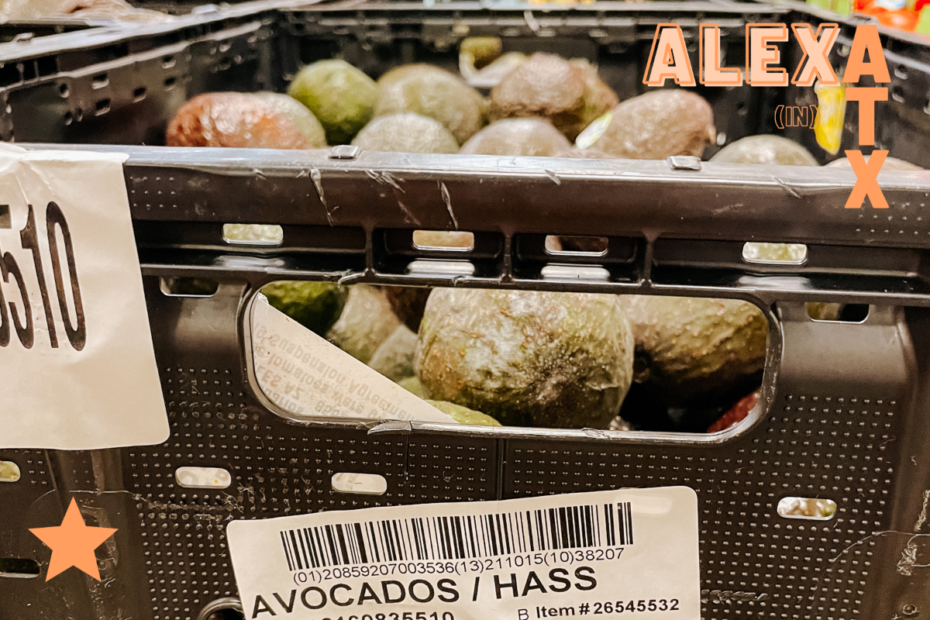Library fines, the Austin Half Marathon, and all-natural food //
Alexa here! Now that I’ve settled into our second semester, I’m excited to dive back into Alexa in ATX. Here’s what I’ve been up to the past few weeks as I try to be a more engaged and sustainable citizen.
No more library fines for me
In my last article, I shared that I read Forget the Alamo after finally getting off the waitlist at the Austin Public Library. What I didn’t mention is that I racked up a few dollars in fines while borrowing the book because I brought it home with me over my winter break.
I was prepared and willing to pay, but last week the Austin City Council voted unanimously to eliminate fines for overdue materials at the Austin Public Library. The decision follows a 2019 acknowledgment from the American Library Association that monetary library fines represent social inequity. According to the Austin Public Library website, “Late fines create a financial barrier for many people in accessing library materials, and have been found to be an ineffective way of encouraging returns.”
The elimination of library fines isn’t retroactive, so I will still be paying my fees for Remember the Alamo, but I’m excited that the library has taken this step to make its materials more accessible. I also love knowing that fines are an ineffective way of encouraging returns. The library website even states that ending fines in other communities has resulted in higher return rates, because library users are less likely to avoid the library when they don’t owe money.
I ran the Austin Half Marathon
In February, I ran the Austin Half Marathon! It wasn’t my first, but I’ve found that running in a new city is a great (and fast) way to get to know different neighborhoods.
While training, I often ran along Shoal Creek on the west side of Central Austin. I love that Austin has dedicated green spaces like this. But green space usually isn’t distributed equally throughout cities, as I wrote about last fall. I’m fortunate to live near parks and greenbelts, but many of my fellow Austinites do not.
The Austin half marathon route dips south of the river along South Congress and back before stretching west and circling back to end at the State Capital. As I ran north back towards the center of the city, I passed a man walking along the side of the road and shouting at runners about how it was his neighborhood and he hadn’t seen any of those people there before.
While I don’t know the man or his situation, I tried to empathize with him. It seemed like his day was disrupted by the race somehow. Many city streets were shut down for the race, so maybe he couldn’t drive to work or to buy groceries.
In a way, it reminded me of our article about how the Olympics can affect local host communities. Just as citizens of Rio de Janeiro were displaced for the Summer Games, neighborhoods in Austin were cut off from road infrastructure for an entire morning. While the marathon disruption is a smaller scale and shorter disruption than the Olympic Games, this forced me to think about two things.
First, I am prone to remove myself from the problem. It’s easy to point fingers at the International Olympic Committee without recognizing that I participate in events that may burden or at the very least inconvenience other communities. While there’s an argument that we can both have these events and care for local communities, that’s not always the case in reality.
Second, just because something only happens once per year, doesn’t mean that it is insignificant. What if the man that I ran past lost his job because he was late to work as a result of the road closures?
I actually signed up to run again next year–but I will continue to think about how I interact with neighborhoods in Austin that aren’t my own. This is closely related to next month’s Impactfull topic, too.
All-natural, local fast food
I’ve been trying new restaurants lately, and one of my favorites is P. Terry’s Burger Stand, a fast food chain started in Austin in 2005. Apart from its unique architecture, the restaurant boasts an all-natural menu. That got me thinking– what does it mean for food to be “all-natural”?
While they don’t define “all-natural,” their website lists the ingredients in each of the items they sell– and much of it seems to be made from simple ingredients. Notably, their beef and chicken are described as “100% all natural.” According to the University of Nebraska-Lincoln, meat labeled as “all-natural” cannot be altered during processing. However, this label does not include farming practices– such as whether the cattle were fed organically or given growth hormones. Cattle farming practices are important given how the industry contributes to carbon emissions.
The website doesn’t comment on whether other ingredients, like vegetables and spices, are organic or all-natural. Veracruz All Natural Tacos, an Austin favorite that I wrote about last fall, also markets their food as all-natural. However, their site also doesn’t clarify how their food is all natural.
As I’ll write more about next week, I think it’s really important to know where our food comes from. And not just for our personal health– locally grown food is more sustainable and supports local economies. It’s an issue that I want to continue exploring.
That’s all for this week! Check back next Friday to learn about locally-grown produce and voting.
- College Football, Ariana Grande, and Water - September 3, 2023
- Livestock and Land Use: How Are We Feeding The Planet? Impactfull April 2022 - April 19, 2022
- What Does Voluntourism Look Like? A Case Study in a Cambodian Orphanage - March 28, 2022
